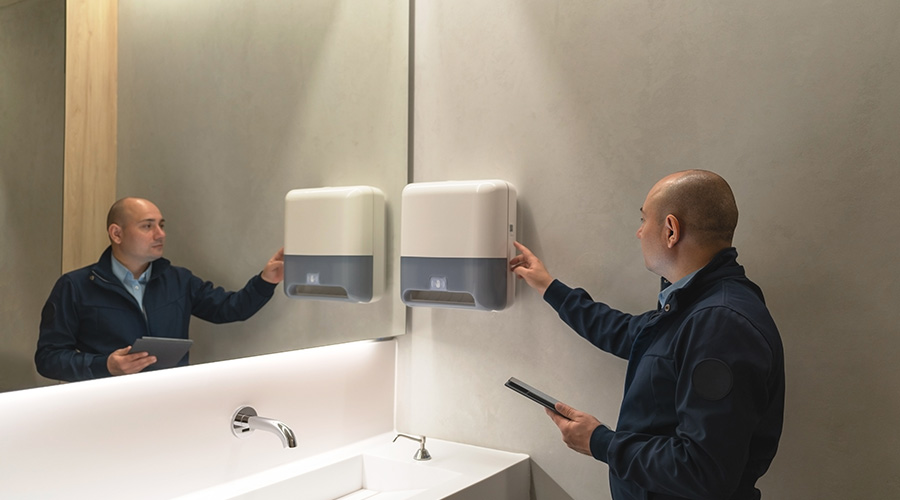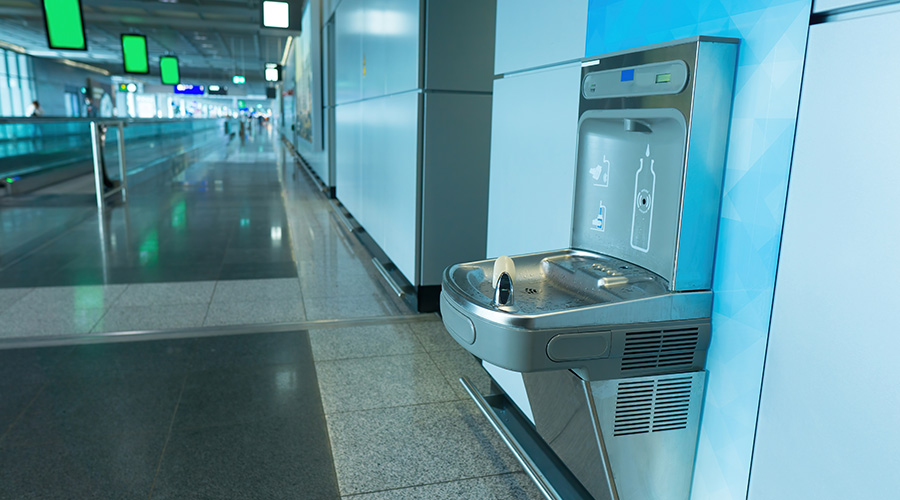Dispensers Common Target to Improve Restroom Hygiene
The most frequent targets of managers looking to improve restroom hygiene are dispensers of toilet tissue, paper towels, facial tissue, napkins, soap, and deodorizers. If these restroom products require hand contact, they present the risk of cross-contamination. The use of touchless restroom products includes these dispensing products and products designed for the disposal of used products in containers with touchless lids.
For years, managers have tried various tactics designed to remind restroom visitors that it is essential for them to wash their hands with soap after using the restroom. Tests on hand-swab samples show that not washing hands at all leaves the largest amount of bacteria on the skin, while washing with water only leaves a significant amount of bacteria on the skin. Washing with soap and water and taking a few extra seconds to do a thorough job leaves users' hands bacteria free.
Managers also can pay closer attention to housekeeping practices in their efforts to improve a facility's restroom hygiene. Trained custodians should use the standard methods to clean all restroom fixtures and surfaces. Three factors determine cleaning success: the cleaner used, the amount, and the application method. Manual cleaning methods leave germ-laden mops and brushes, while using a low-pressure power-spray washer and vacuum tends to leave surfaces cleaner and drier.
By testing restroom air and surfaces for contamination, managers can be proactive in their efforts to monitor and improve restroom hygiene, and they can use the results to fine-tune cleaning methods. Testing consists of collecting samples from the air, fixtures and surfaces with swabs and having the samples tested by a laboratory or using a hygiene meter for in-house testing.
A swab hygiene tester is a ready-to-use dilution-and-delivery device. The swab is contained in a tube with a reagent in the handle. After swabbing a surface, the tester places the swab in the tube and injects a reagent from the handle into the tube and mixes for five seconds. The mixture then is ready for testing.
Managers also can consider using a luminometer — an electronic hygiene monitor — to measure adenosine triphosphate (ATP), a universal energy molecule found in all animal, plant, bacterial, yeast, and mold cells. The luminometer is a 3- by 7- by 1-1/2-inch, handheld, battery-operated device that can track 100 programmable locations and store 500 tests. One set of batteries is good for 3,000 or more tests. When the instrument's reagent contacts a sample, the sample emits light. The amount of light emitted is directly proportional to the amount of ATP present in the sample.
The instrument measures the amount of light generated and in about 15 seconds converts the reading into the amount of contamination in the sample. The higher the reading, the more contamination the surface contains.
The advantage of using this instrument for in-house sampling is that custodians who perform the assessment immediately after cleaning can obtain results and take corrective action, quickly validating cleaning methods and ensuring the safety and health of restroom users. Hospitals, restaurants, food processors and food stores use this method to ensure water and surface cleanliness and the effectiveness of standard operating procedures for sanitation.
Once custodians have determined the effectiveness of their cleaning methods, they can adjust these methods, if necessary, until they obtain the desired results. Managers can document the best methods, perform any needed re-training, and test and certify custodial employees to ensure they obtain the necessary skills to provide clean, sanitary restroom environments.
Related Topics:














